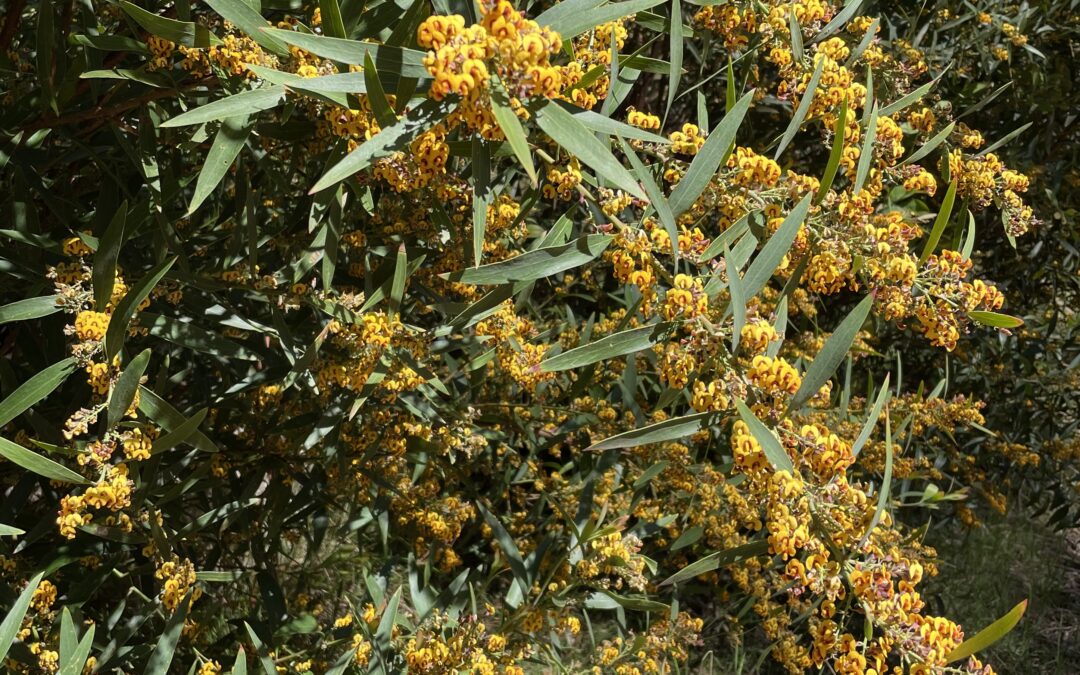While commonly known as the Grampians Bitter-Pea, Daviesia laevis is not only found in the Grampians/Gariwerd, with small populations also known from nearby ranges Mt Langi Ghiran, Mt Cole/Buangor and the Black Range. This large shrub has quite large, leaf-like phyllodes that are very similar to those found in many Wattle species, and for much of the year this could easily be mistaken for a Wattle. However, when in flower when it displays its small egg-and-bacon type flowers on mass with great effect.
Daviesia laevis is nationally listed as Vulnerable (EPBC) and within Victoria as Critically Endangered (FFG) due to its low population size and limited distribution. Small population size together with the need for disturbance such as fire for recruitment make this species vulnerable to inappropriate disturbance regimes and other threats such as weed invasion and macropod browsing. There is a clear need for ex-situ conservation of this species to ensure its ongoing survival, which is why it has been chosen as one of the 24 species in the Preventing the extinction of Victoria’s threatened flora project run by the Royal Botanic Gardens Victoria. For this species our efforts will focus on collecting seed for long term storage and plant material for ex-situ living collections along with isolation, collection and storage of the symbiotic rhizobia needed for this species to grow.
This research is funded by DEECA Victoria’s Nature Fund. The ‘Preventing the extinction of Victoria’s threatened flora’ project is led by Royal Botanic Gardens Victoria in partnership with La Trobe University, Australian Network for Plant Conservation, DEECA, Trust for Nature, ENVITE, Bairnsdale & District Field Naturalists Club, Friends of the Grampians Gariwerd, Wimmera CMA, Nillumbik Shire, Halls Gap Botanic Gardens and the Australasian Native Orchid Society Victorian Branch.
Feature image: Daviesia laevis (supplied RBGV)

